Smuggler’s den: Criminals who tried to smuggle drugs, exotic fish, fruit into South Australia revealed
Drug-laden arrows and tennis balls, exotic fish and even some truly forbidden fruit – these are the tales of high-stakes smugglers sprung in SA.
Police & Courts
Don't miss out on the headlines from Police & Courts. Followed categories will be added to My News.
The movies make it seem glamorous – exotic locations, illicit rendezvous, high stakes, big risks but even bigger rewards.
But while fiction smiles on every Danny Archer carrying a Blood Diamond or Han Solo with hidden compartments, real life exacts a heavy toll on smugglers.
Schapelle Corby, the Bali Nine and South Australia’s own “Cocaine” Cassie Sainsbury made international headlines with their less-than-stellar bootlegging.
And while their crimes had a touch of what we’ll call “Hollywood smuggling”, their Adelaide brethren have more than a few stories of their own.
From drug-laden arrows and tennis balls through to exotic wildlife and even some truly forbidden fruit, these are the tales of SA’s would-be smuggling masterminds.
A FISHY DUO


Huy Ca Truong and Kuok Weai Alex Chang lived more than 5000km apart, but that distance was easily bridged by their mutual passion for sea life.
In the early 2010s, Truong was the owner of a modestly successful Allenby Gardens aquarium.
Chang, meanwhile, was one of Singapore’s most renowned and respected aquaculture gurus – a man who had devoted his life to protecting nature.
Sadly, there was one thing Chang found more beautiful than the unspoilt world – cold, hard cash.
Prior to 2015, he and Truong conspired over social media to illegally import rare and exotic fish into Australia.
Their scheme came undone in February of that year, when Border Force caught Chang at Adelaide Airport with 20 plastic bags containing 176 Asian Arowana fish.
Considered lucky by some Asian cultures, the fish are pests under Australian law and banned as a threat to our nation’s biosecurity.

The haul would have been worth up to $235,000 for the duo – had some of the fish not died, and the others been euthanised.
Desperate to maintain his ecowarrior reputation, Chang told authorities he’d committed his crimes to fund a mistress – both a lie and news to his supportive wife.
His ruse failed and, as noted by the District Court in sentencing, Chang “lost face” in his homeland.
Chang was given a suspended two-year prison term and immediately deported, with Judge Stephen Millsteed decrying his conduct.
“Your actions have shown a complete disregard for the ethical treatment of fish and the environment,” he said.
Chang received an identical sentence, with Judge Milsteed ruling he should be “viewed as equally responsible” for the smuggling – though his motives were even more base.
“The crime was commercially motivated and demonstrated your desire to gain an upper hand on your competitors by offering exotic breeds,” he said.
UNLUCKY BAG
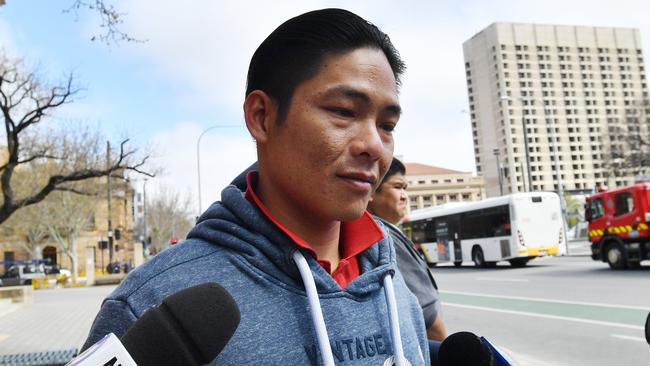
Strangely, Truong and Chang aren’t Adelaide’s only fish smugglers.
Four years later, Vietnamese national Van Ho Le returned from his homeland with the same breed – an Asian Arowana – in a bag of water around his neck.
By that time, the market price for a single Arowana was $1000 but Le insisted he paid just $250 and intended to keep the “lucky” fish “as a pet”.
He even had paperwork in his luggage saying the fish had been “bred in captivity” and was therefore legal to sell – in Vietnam, not in Australia.
Following his arrest in April 2019, Le admitted he knew his actions were illegal but insisted he had no clue the Arowana was both endangered and considered a threat to Australia.
Facing the Adelaide Magistrates Court, Le fared better than Chang and Truong – he received an $800 fine and was ordered to pay court costs.
The fish wasn’t so lucky after all – it was destroyed.
DRUG-TO-DOOR SERVICE
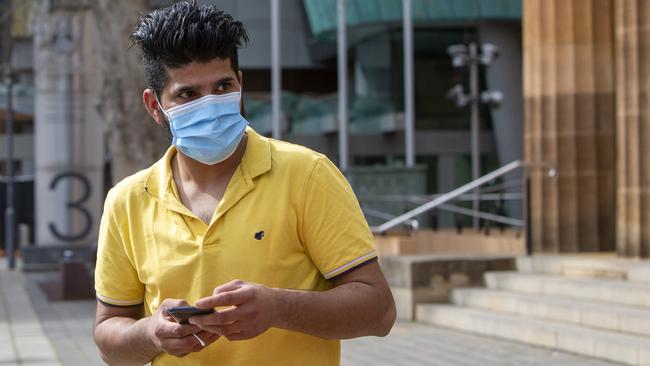
Whatever your position on vaccination, no one enjoyed the strict lockdown phase of the still-ongoing Covid-19 pandemic.
One of the few bright lights in those dark days was the knowledge takeaway shops were still open, and that tasty treats could be delivered to your door.
Even those unfortunate enough to wind up in a medi-hotel could still draw some comfort from a box of nuggets, some hot and tasty fries … or, in one notable case, a hit of opium.
In October 2021, Raman Sharma arrived at one of the CBD’s medi-hotels carrying two bags, telling SA Police on duty that he was a food delivery driver.
He dropped them off, but suspicious officers quickly noted the bags lacked both receipts and names attached to them.
A quick search located the opium inside – not the sort of drug one sees all that often on Adelaide’s streets.
Sharma was arrested at his home the next day and, following swift negotiations with prosecutors, promptly pleaded guilty.
He will be sentenced by the District Court in the new year.
COFFEE FOR THE AILING
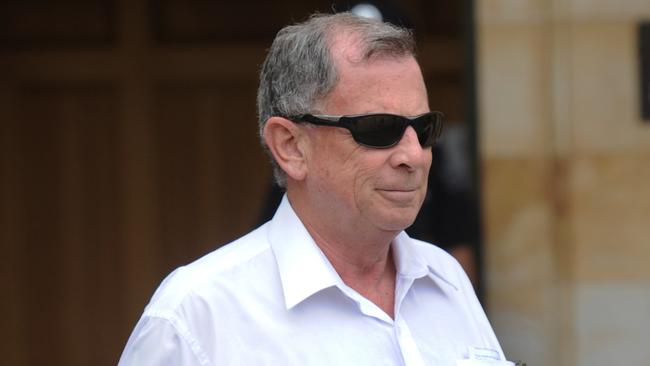
Sharma’s intended method of delivery had been pioneered three years earlier by someone entrusted to stop, not indulge in, smuggling.
In 2018, prison officer Michael Charles Asker used takeaway bags and even an empty coffee cup to facilitate drug deliveries to inmates.
Those inside wanted suboxone – an opioid withdrawal treatment – and Asker was willing to provide … in exchange for $500 hidden inside takeaway containers.
He made successful deliveries in September and December of that year but was caught with his third package, which contained methylamphetamine.
Unlike Sharma, Asker’s crime was made all the worse by his position within the prison system.
His actions breached his oath as a prison officer, meaning he was guilty of corruption as well as drug-smuggling.
Asker claimed to have a pure motivation, saying he had grown disillusioned by and disenchanted with the prison system while watching life behind bars.
That “slow-burning crisis of faith” in the system’s ability to rehabilitate people prompted his “bleeding heart humanitarian instinct” to help those in need, he insisted.
District Court Judge Liesl Kudelka was unimpressed.
“You relied on your prior good character to ask for leniency, but it was the fact of that good character that allowed you to act in the manner you did,” she said in sentencing.
“It’s of concern that there is no evidence you intended to stop what you were doing … it’s fortunate you were caught.”
She imposed a two-and-a-half-year prison term but ordered it be served on home detention – monitored by the very peers Asker had betrayed.
BEHIND BARS
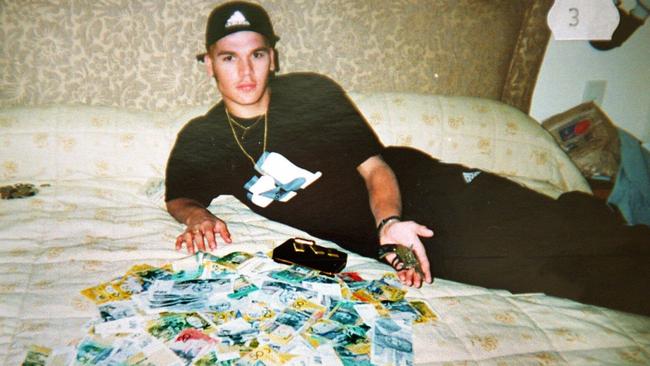
Asker was doing favours for those in prison but, as history has shown, he was far from the only one helping inmates score contraband.
As smuggling goes, getting items into and out of prisons involves ingenuity and drive unmatched by criminals on the outside.
One of the state’s most infamous criminals – serial bank robber and master of disguise Anthony John Smith – returned to the spotlight in 2006.
He was in medium-security at the time, and somehow had managed to smuggle four hacksaw blades, three mobile phones and a pair of pliers into his cell.
In 2013, Smith – also known as the “artful dodger” for his repeated escape attempts – was caught in a higher-security cell with an Aladdin’s cave of wonders.
Improvised weapons, including a sharpened screwdriver, lay alongside drugs, two mobile phones and phone chargers.
One year earlier, a three-month investigation by police and prison authorities had resulted in 17 arrests of people both inside and surrounding Mobilong Prison, near Murray Bridge.
The syndicate had managed to provide copious amounts of drugs, and even mobile phones, to inmates through a variety of means.

Two gaming consoles – one a Sony PlayStation – had been hollowed out to make room for bags of drugs and the phone needed to order more.
Balloons floated contraband over the walls, tennis balls filled with drugs were hit over fences and, in one case, a drug-laden arrow was fired into the exercise yard.
In all, police seized 15gm of amphetamines, 12gm of heroin and undisclosed quantities of cannabis, Xanax and morphine.
They also recovered 50 capsules of the drug known on the streets as “miaow miaow” – one of the first times it had been found in SA – and 230g of white powder.
But it’s not just weapons and drugs being smuggled into prisons – some contraband is even more disturbing.
In 2011, serial paedophile Mark Trevor Marshall – who was, at that time, trying to convince authorities he was safe to be released – was caught with a stack of CDs.
Although they contained images of child exploitation, Marshall was not punished for his offence, with officials opting to deal with it through “internal disciplinary procedures”.
In 2014, he was caught with a bundle of documents that included the names and photographs of children, as well as maps of the suburbs in which they lived.
That horrifying discovery grounded Marshal’s freedom bid, and he remains in custody.
FORBIDDEN FRUIT
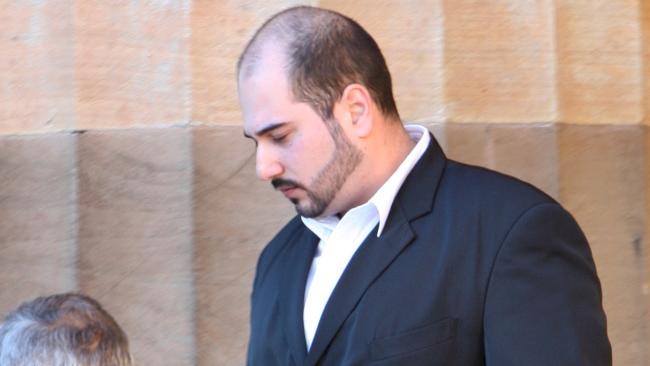
As we’ve seen, many a rogue has tried their hand at smuggling in SA – but we should all spare a thought for the man whose devotion to family left him facing court.
In January 2009, Salim Georges was returning to the state from Victoria when he was stopped by quarantine officers at Bordertown.
In the boot of his car, they found more than 200 plums and nectarines – along with a single mango – from the family’s traditional holdings east of the border.
“I wasn’t keen on taking the fruit but the family persisted,” Mr Georges explained.
“I tried to get out of it but, in the end, I felt pressured into it.”
Prosecutors weren’t feeling merciful, insisting Mr Georges had placed the state’s million-dollar agriculture industry at risk of fruit fly infestation.
Magistrate Alfio Grasso, however, was mindful of the pressure one’s family can exert and showed Mr Georges as much leniency as he could.
He fined him $1500 – or $7.50 per piece of fruit – and ordered he pay court costs.





